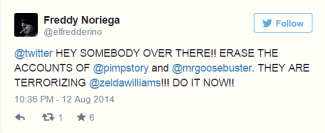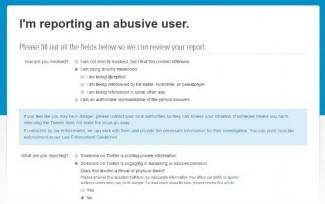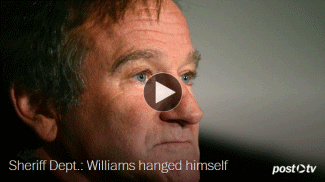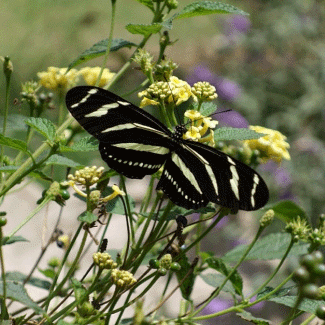By Hayley Tsukayama
August 13, 2014
NOTICE: THIS WORK MAY BE PROTECTED BY COPYRIGHT
YOU ARE REQUIRED TO READ THE COPYRIGHT NOTICE AT THIS LINK BEFORE YOU READ THE FOLLOWING WORK, THAT IS AVAILABLE SOLELY FOR PRIVATE STUDY, SCHOLARSHIP OR RESEARCH PURSUANT TO 17 U.S.C. SECTION 107 AND 108. IN THE EVENT THAT THE LIBRARY DETERMINES THAT UNLAWFUL COPYING OF THIS WORK HAS OCCURRED, THE LIBRARY HAS THE RIGHT TO BLOCK THE I.P. ADDRESS AT WHICH THE UNLAWFUL COPYING APPEARED TO HAVE OCCURRED. THANK YOU FOR RESPECTING THE RIGHTS OF COPYRIGHT OWNERS.
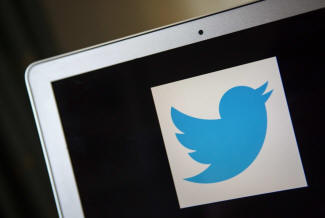
Twitter has promised to improve and expand its policies after Robin Williams' daughter is bullied off of the social network. REUTERS/Eric Thayer
Internet trolls bullied Robin Williams' daughter off of Twitter and Instagram just days after her father's death. A handful of Twitter users sent Zelda Williams messages on Twitter that blamed her for Robin Williams' suicide by hanging, as well as pictures of the comedian altered to show bruises around his neck.
As my Washington Post colleague Caitlin Dewey reported, Zelda Williams, 25, said she could not bear the messages and would stay off of Twitter and Instagram for a "good long time." She also asked her social network followers to petition the company to block two particular accounts that were responsible for the bulk of the abuse. Those accounts have since been removed by Twitter. In a statement, the company said that it will be updating its policies in light of the incident.
“We will not tolerate abuse of this nature on Twitter," Del Harvey, Twitter's vice president of trust and safety, said in a statement. "We have suspended a number of accounts related to this issue for violating our rules and we are in the process of evaluating how we can further improve our policies to better handle tragic situations like this one. This includes expanding our policies regarding self-harm and private information, and improving support for family members of deceased users.”
But the messages that forced Zelda Williams offline are just a sliver of the types of abuse many face on Twitter. Imani Gandy, senior legal analyst at the reproductive health publication RH Reality Check, wrote Tuesday about abuse she said she faces on the service every day -- in general and from one man, in particular, whom she has been unable to stop.
This is more than a few mean comments, according to her account. She wrote that the abuse leveled at her has been constant because of her race, gender and even her medical condition -- she said she has a brain tumor which this man has accused her of faking.
She's ignored him, and taken other steps as well. "I’ve blocked at least a thousand of his accounts over the past two years," she wrote. "I’ve reported him using Twitter’s 'Report Abuse' form. I briefly considered calling the police, but, really, what would be the point? I’ve seen how police treat stalking victims and victims of online harassment far more severe than mine."
Gandy has also collected other instances of harassment similar to hers. In one case, she said, Twitter reviewed a tweet threatening to rape a woman and decided it did not violate its community rules against "abusive behavior."
"Got that?" Gandy wrote. "It is not a violation of Twitter’s rules to threaten to rape another Twitter user."
Twitter does have a system that lets users report abuse, document harassment and -- in some cases -- get bad accounts taken down. The company also last year introduced a "Report Abuse" button, after Caroline Criado-Perez, a British woman leading a campaign to put Jane Austen's image on the 10-pound note, was subjected to a flood of abuse. She said she faced at least one rape threat per minute.
As even Twitter's own statement on Wednesday indicates, many still find its tools don't address the problem. For example, Twitter allows users to block accounts that target them. But sadly, these measures don't even begin to stop persistent attackers, who often create new accounts to continue their actions almost without pause.
"While I am truly sorry for what the Williams family is experiencing during this time, I am concerned that it takes an event like this to bring heightened attention to a problem that so many face every day," said Soraya Chemaly, a media critic and feminist activist who has worked with Facebook to make more robust protections for those targeted by abuse online.
Gandy, in her post, recommends that Twitter take a leaf from a third-party software called "Block Together." The program, which is free for download, lets users automatically block the accounts of new Twitter users who send them direct "@" replies, and share their list of blocked accounts with friends. It was created by Electronic Frontier Foundation technologist Jacob Hoffman-Andrews after he read a blog post by iOS developer Danilo Campos calling on Twitter to add many of those features.
Chemaly said that Twitter's fierce commitment to free expression may be clouding its judgment on this issue. That attitude is "all well and good, except it seems to strongly suggest that they don't fundamentally care about the effects of harassment on certain members of their customer base - namely, the ones most likely to need additional protections built into the system," she said.
But if Twitter doesn't take steps to protect the character of its community, Chemaly added, everyone loses. "As is often the case, it is Williams, the target of abuse, and not her abusers, who's left Twitter," she said.
Have more to say about this topic? We take your questions every week in our weekly livechat, Switchback, Fridays at 11 a.m. ET. The comment box is open, so submit your questions now.


